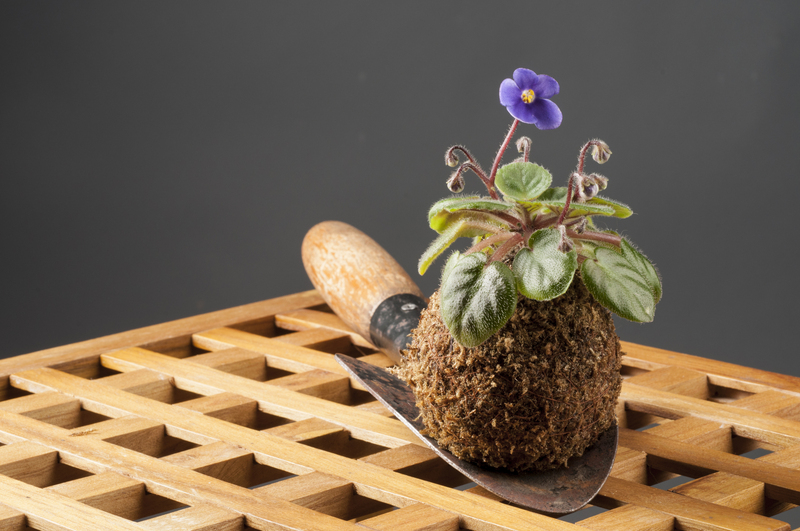Eco-Friendly Ways to Dismantle an Unwanted Tree Stump
Trees enrich our landscapes, improve air quality, and enhance property value, but sometimes a tree must be removed due to disease, storm damage, or development plans. This often leaves a stubborn tree stump behind, presenting homeowners with the challenge of safe, effective, and eco-friendly methods for removal. If you want to avoid harsh chemicals or fossil-fuel-reliant heavy machinery, this guide will outline responsible, alternative ways to tackle unwanted tree stumps while being gentle with the environment.
Why Choose Eco-Friendly Tree Stump Removal?
Traditional stump removal often relies on harsh chemicals, burning, or heavy equipment. These methods come with downsides:
- Chemical stump removers can pollute the soil and groundwater and may harm pets and wildlife.
- Burning stumps releases greenhouse gases and can pose fire hazards, especially in dry areas.
- Excavation by machinery disturbs the surrounding soil and plants, often leaving a large environmental footprint.
By choosing eco-friendly tree stump removal methods, you prevent pollution, promote healthy soil biology, and make your garden more sustainable.

Assessing Your Stump
Before selecting the best stump-dismantling method, evaluate important factors:
- Stump size and species: Hardwoods (like oak) decay slower, while softwoods (like pine) break down faster.
- Location: Consider utility lines, landscape features, and proximity to structures.
- Future plans for the area: Will you re-plant, create a garden, or install hardscape features?
Safety First
Always wear protective gear when working around stumps: gloves, sturdy shoes, eye protection, and long sleeves. If unsure about roots near utility lines, consult with professionals or utility companies before excavating.
Manual Eco-Friendly Methods for Stump Removal
1. Digging Out the Stump by Hand
This is the most natural stump removal technique for smaller stumps and those with shallow roots. It demands physical effort but is inexpensive and effective.
- Tools Needed: Shovel, mattock or grub hoe, pruning saw, ax or loppers, and possibly a pickaxe.
- Dig around the stump base to expose the roots. Remove as much dirt as possible.
- Cut through roots with a saw, ax, or loppers. Work your way down and around the entire root system.
- Once all the major roots are severed, wiggle the stump back and forth to loosen it, and carefully lift it out.
Tip: If the stump is large, consider enlisting a friend for extra leverage.
2. Using Epsom Salt for Biological Decay
Epsom salt (magnesium sulfate) accelerates natural decomposition by depriving the stump of moisture--environmentally friendly and safe for surrounding plants if used properly.
- Drill holes (about 1 inch wide, 8-10 inches deep) all over the top of the stump.
- Fill each hole with Epsom salt.
- Moisten (but do not flood) with water, then cover the stump with a tarp or plastic sheeting to keep rain out and speed decomposition.
- Reapply salt every few months. After a year or so, the stump should be soft and easy to break apart manually.
Pros: Safe for pets, beneficial for soil in small amounts, and leaves no toxic residues.
Cons: It is a gradual process that may take 6-18 months based on stump size and wood type.
3. Encourage Natural Rot with Compost
Turn your tree stump into a nutrient-rich compost pile, accelerating decay in a sustainable cycle.
- Drill several holes into the stump to allow moisture and microorganisms to penetrate.
- Pile nitrogen-rich materials (such as manure, kitchen scraps, coffee grounds, or lawn clippings) atop the stump.
- Keep the pile moist, and consider covering with soil and leaves to retain humidity and warmth.
- Over time, bacteria and fungi will break down the wood.
This eco-friendly tree stump solution recycles waste while enriching your soil.
4. Utilize Fungi for Eco-Friendly Decomposition
Some mushrooms (notably oyster and shiitake) are powerful wood decomposers. Inoculating your tree stump with mushroom spawn is a cutting-edge approach that not only disintegrates the wood faster but can yield edible mushrooms.
- Drill holes in your stump and fill with mushroom spawn plugs or sawdust inoculant.
- Seal holes with wax to keep the spawn moist.
- Cover the stump with straw or leaves and keep the area damp.
- Within a few months to a year, mushrooms will appear, the stump softens, and decomposition is rapid.
Always use edible mushroom species from reputable suppliers and avoid wild-foraging unless you are an expert.
Mechanical and Alternative Eco-Friendly Stump Removal Techniques
5. Using a Manual Stump Grinder
While gas-powered stump grinders produce emissions and noise, manual versions are eco-conscious. These grinders require rotational cranking to gradually abrade and chip away the unwanted stump over a few hours.
- Pros: No chemicals or fossil fuels used; manageable for small- to medium-sized stumps.
- Cons: Not suitable for large or deeply rooted stumps; physically demanding.
6. Lever and Fulcrum Method
For smaller stumps, employ a lever and fulcrum system with a heavy-duty crowbar and a sturdy fulcrum (such as a large stone or log).
- Dig around and cut major roots first.
- Insert the bar under the stump and use the fulcrum to multiply your lifting power.
- Rock and pry the stump upwards, breaking remaining roots as you progress.
This method is back-to-basics and environmentally harmless, requiring no power tools or chemicals.
7. Solarization: Using the Sun for Stump Decomposition
Cover the stump with black plastic or an old tarp, weighted down with stones or soil. The heat from concentrated sunlight can bake the stump, discourage regrowth, and speed up decay by trapping heat and moisture.
- Works best in sunny climates and during the warmer months.
- Be patient--this green stump removal technique is gradual and works well in tandem with other methods like composting or Epsom salt.
Creative Eco-Friendly Tree Stump Reuse
Sometimes, the most environmentally friendly approach to tree stump disposal is not removing it at all, but repurposing it creatively. Here are some inventive and sustainable alternatives:
- Planter: Hollow out the top to make a rustic outdoor planter or herb garden.
- Garden Sculpture: Let nature take its course and embrace moss, ferns, and fungi growth for a woodland aesthetic.
- Natural furniture: Use stumps as stools, side tables, or the base for a bird bath.
- Fairy house: Decorate for whimsical garden charm--kids love this!
- Wildlife habitat: Left undisturbed, stumps become homes for insects, birds, and small mammals, fostering biodiversity.
These options minimize waste and transform an unwanted tree stump into a garden feature.
What to Avoid When Removing Tree Stumps
- Do not use chemical herbicides: Many conventional stump treatments are hazardous and persist in the environment.
- Avoid burning: Unless local regulations permit and you have no fire risk, burning is best avoided due to air pollution and safety concerns.
- Beware of disturbing soil life: Intensive digging can harm beneficial termites, beetles, worms, and mycelia that create healthy garden ecosystems.
Post-Removal: Eco-Friendly Disposal of Stump and Roots
Once the stump is dismantled, dispose of the wood waste responsibly:
- Compost smaller chips and roots as carbon-rich "brown" material.
- Use larger pieces for firewood (if untreated and dry), mulch, or woody debris habitats in your landscape.
- Contact a local tree service or compost facility for pick-up if you cannot use the material yourself.

Frequently Asked Questions About Eco-Friendly Stump Removal
How long does it take to naturally decompose a tree stump?
The natural decomposition process can take 3 to 7 years, depending on wood species, size, climate, and moisture levels. Using methods like Epsom salt, compost, or fungal inoculation can shorten this timeline to as little as 1-2 years.
Are there risks to using Epsom salt or mushroom spawn?
Used responsibly, both are safe and environmentally benign. Excessive Epsom salt can slightly alter soil chemistry, so avoid overapplication. Only use cultivated mushroom spawn from trustworthy sources, and monitor for unwanted wild fungi.
Will roots die after stump removal?
Most roots die back after stump removal or decay. However, some vigorous trees (like poplar or willow) may send up suckers from remaining roots if not fully removed. Covering or digging up major roots can help prevent this.
Can I remove a large tree stump myself?
For very large stumps--especially those with deep or extensive root systems--eco-friendly manual methods may not be practical. In such cases, consult with professional arborists or stump grinding services, and request low-impact or green options.
Conclusion: Choosing the Best Eco-Friendly Tree Stump Removal Method
Choosing sustainable stump dismantling techniques protects soil life, reduces pollution, and supports a healthier planet. Whether you opt for Epsom salt, composting, mushroom spawn, or hands-on removal, your efforts will yield a greener, safer landscape for years to come. By avoiding harmful chemicals and embracing creative reuse, you set an example of environmental stewardship right in your own backyard.
Remember, patience is key with natural tree stump elimination. The reward--a vibrant, chemical-free garden--reflects the commitment to eco-friendly living.
Additional Resources for Green Stump Removal
- Arbor Day Foundation - Tree Facts
- US Forest Service - Tree Removal Guidelines
- UMN Extension - Stump Removal Methods
For further queries or local regulations, consult your regional cooperative extension office or certified arborist.